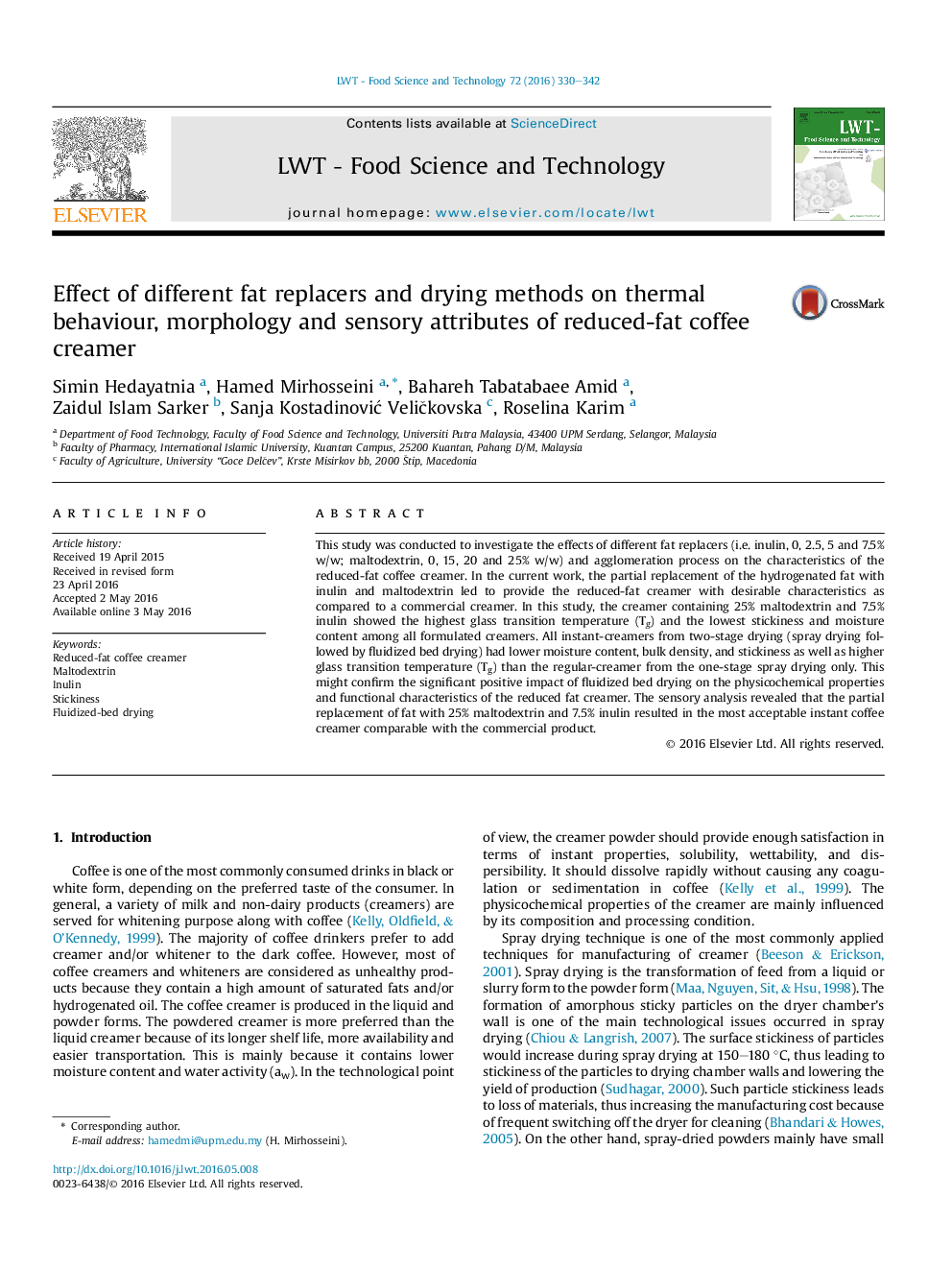| Article ID | Journal | Published Year | Pages | File Type |
|---|---|---|---|---|
| 4563290 | LWT - Food Science and Technology | 2016 | 13 Pages |
•Inulin and maltodextrin were used as fat replacers for production of the reduced-fat creamer.•The results indicated that two-stage drying provided the reduced-fat creamer with more desirable quality.•Glass transition temperature of creamer was significantly (p < 0.05) increased by increasing inulin content.•The reduced-fat creamer containing 25% maltodextrin and 7.5% inulin was the most desirable sample.
This study was conducted to investigate the effects of different fat replacers (i.e. inulin, 0, 2.5, 5 and 7.5% w/w; maltodextrin, 0, 15, 20 and 25% w/w) and agglomeration process on the characteristics of the reduced-fat coffee creamer. In the current work, the partial replacement of the hydrogenated fat with inulin and maltodextrin led to provide the reduced-fat creamer with desirable characteristics as compared to a commercial creamer. In this study, the creamer containing 25% maltodextrin and 7.5% inulin showed the highest glass transition temperature (Tg) and the lowest stickiness and moisture content among all formulated creamers. All instant-creamers from two-stage drying (spray drying followed by fluidized bed drying) had lower moisture content, bulk density, and stickiness as well as higher glass transition temperature (Tg) than the regular-creamer from the one-stage spray drying only. This might confirm the significant positive impact of fluidized bed drying on the physicochemical properties and functional characteristics of the reduced fat creamer. The sensory analysis revealed that the partial replacement of fat with 25% maltodextrin and 7.5% inulin resulted in the most acceptable instant coffee creamer comparable with the commercial product.
